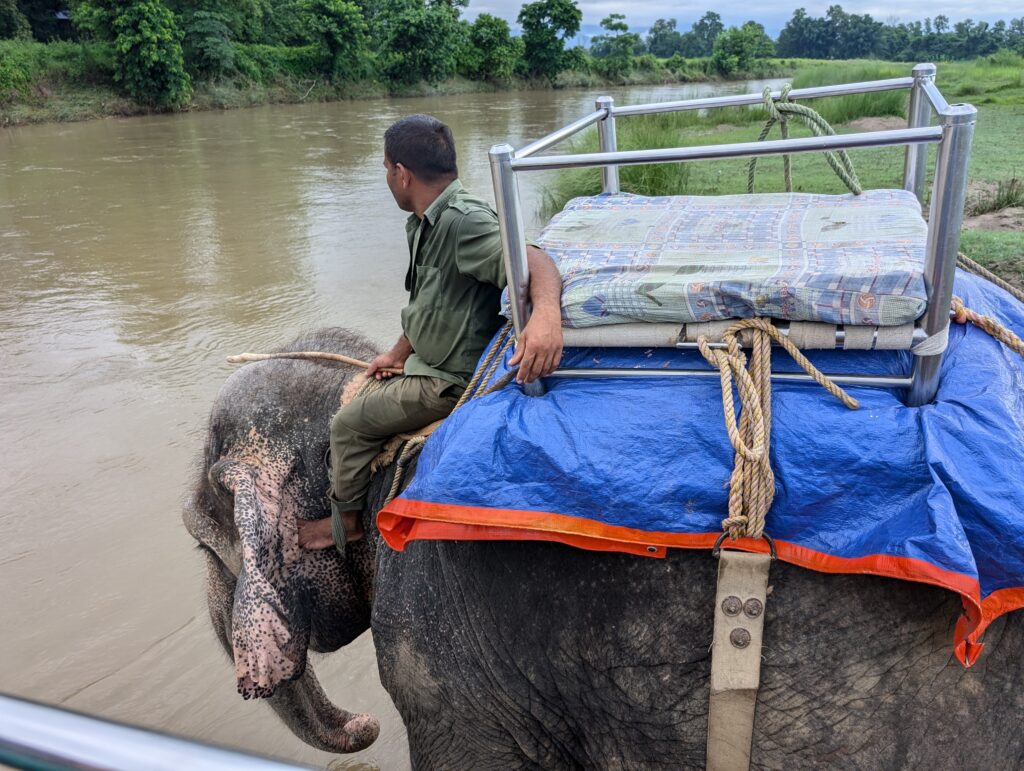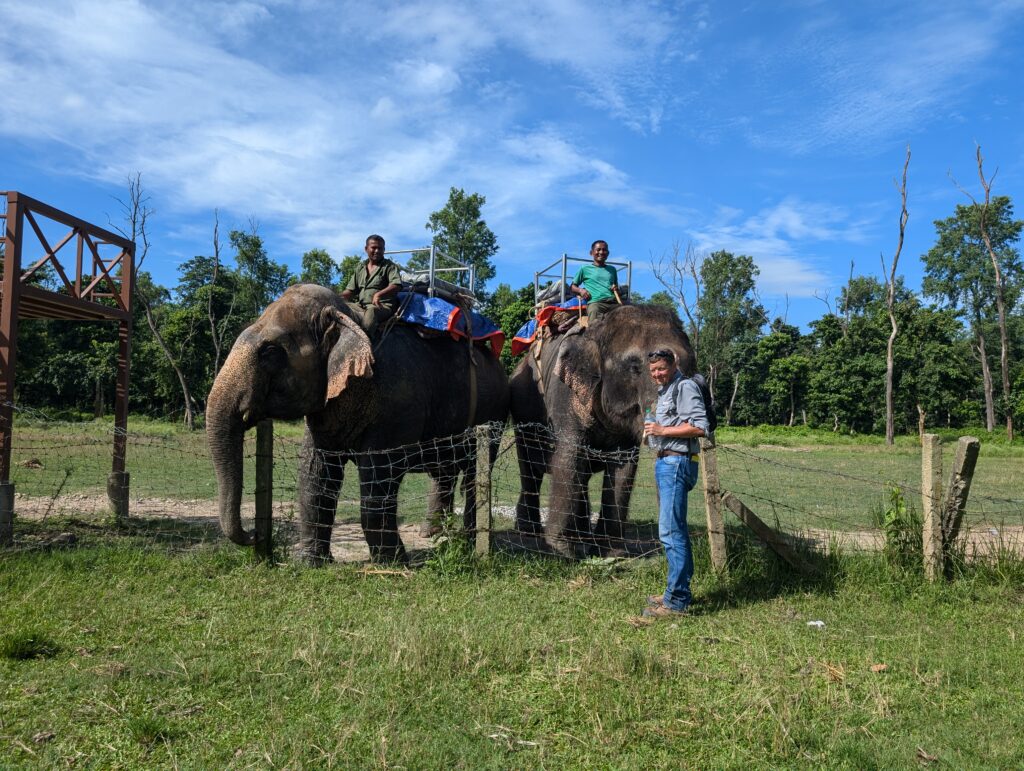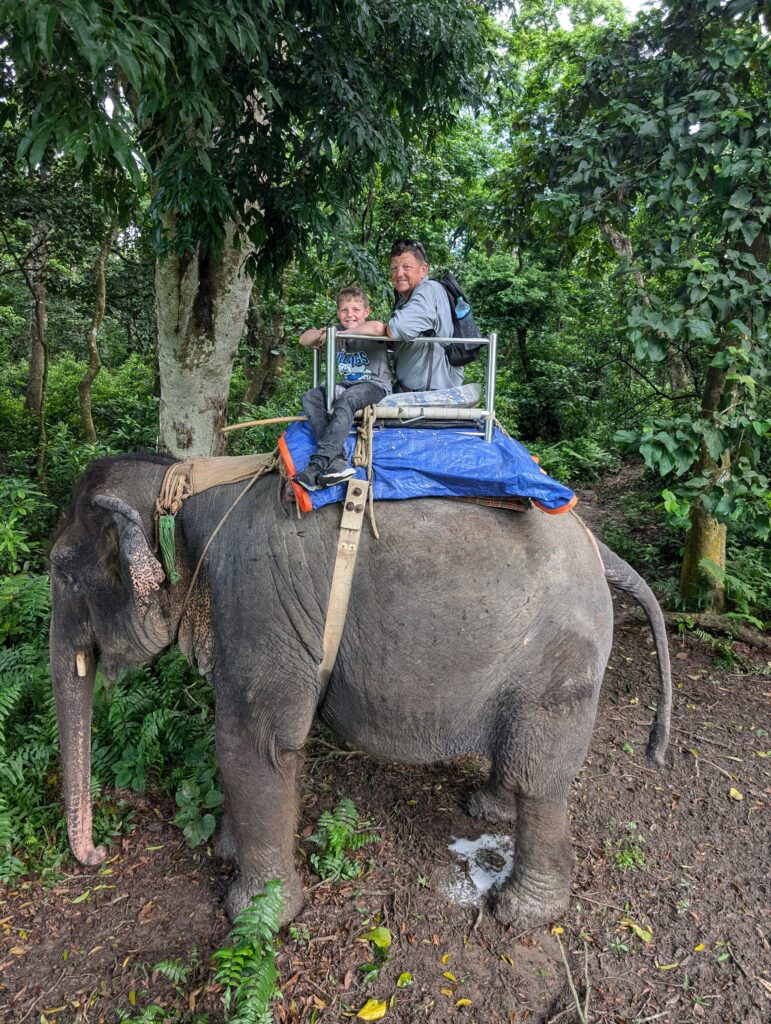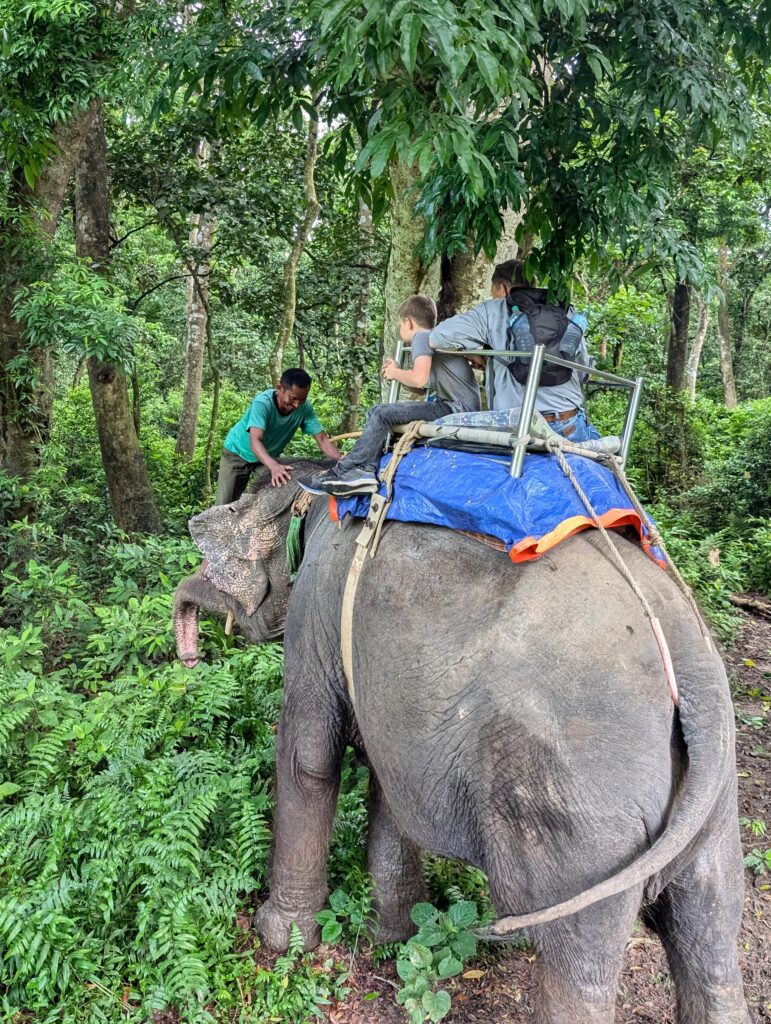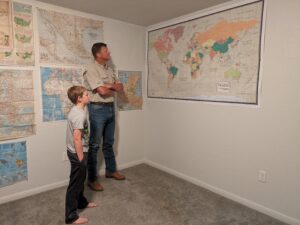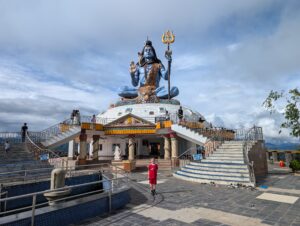Chitwan
Jungle... In Nepal
When you think of Nepal, the first thing that comes to mind is Mount Everest. Nepal is known for being the birthplace of the Buddha. Trekkers indeed head for Nepal to hike the more accessible portions of the Himalayas. There are Buddhist temples and monasteries, and most summit attempts on Everest do begin from Nepal. Surprisingly, though, Nepal also has a huge jungle national park.
Caleb and I spent a night in Kathmandu before heading out to more remote parts of the country. Our plan was to spend a few days each in Chitwan and Pokhara before returning to Kathmandu to do our sightseeing there last. The roads in Nepal have a reputation for being difficult. We figured it would be better to plan on ending in Kathmandu so that if we experienced problems getting from one destination to another, it would only cost us sightseeing time, rather than causing us to miss our flight to Bangkok.
It turned out that we did not need that safety day, but it is true that the roads in Nepal are absolutely atrocious. The distances between Kathmandu, Sauraha (near Chitwan), and Pokhara are only 140-200 kilometers. Driving at highway speeds in Texas, these distances can be traversed in a little over an hour to two hours, at most. Under the best of circumstances, these are seven to eight hour bus trips in Nepal. The isn’t because of frequent stops. The intercity highways connecting these areas are paved in theory. Every one of them has large unpaved stretches which get rutted and scarred by mud holes, especially during the monsoon season. There are washouts, areas where both directions of traffic most drive on the same side of the road, and places where one car cannot pass another. There are cliffs and switchbacks and chuckholes so big the busses must almost stop in order not to jar the suspension. Passengers toward the back take some pretty good bounces.
Travelers have the option to hop on a puddle jumper between these popular destinations, but the tickets start at $100 for the twenty minute flight. That’s the tourist price. Locals fly the same route for $30. In most parts of the world, tourist tickets have a much higher price for foreigners. This was true throughout Turkey, Georgia, and India. I found this annoying after a while. Imagine foreigners having to pay 20x the U.S. rate to see Yosemite or the Grand Canyon. To be fair, the Taj Mahal tickets may have been 22x the cost of the tickets for locals, but that was still less than $15. For the Taj Mahal, that seems pretty reasonable. Locals can see it for 50 rupees. For travelers in a hurry, shelling out the extra money to fly could save nearly a whole day on each move. We wanted to see the scenery anyway, so we took the slow buses. If we had done our last Nepal bus trip first, we may have paid for the plane.
Since we did not have major problems en route to Sauraha – the town nearest Chitwan – we made this 150 kilometer trip in “only” eight hours. Caleb pointed out that I could have made it faster on a bike. “Not on this road,” I fired back. Sauraha is home to dozens if not hundreds of guest house type accommodations. All of them also offer guide services, or will at least coordinate those for you. After our experiences in India, I was a little skeptical of this. Hotel Tree Tops was a family operation, though, and they treated us well. We even had time to see a couple of the local attractions the first evening.
(Continued)

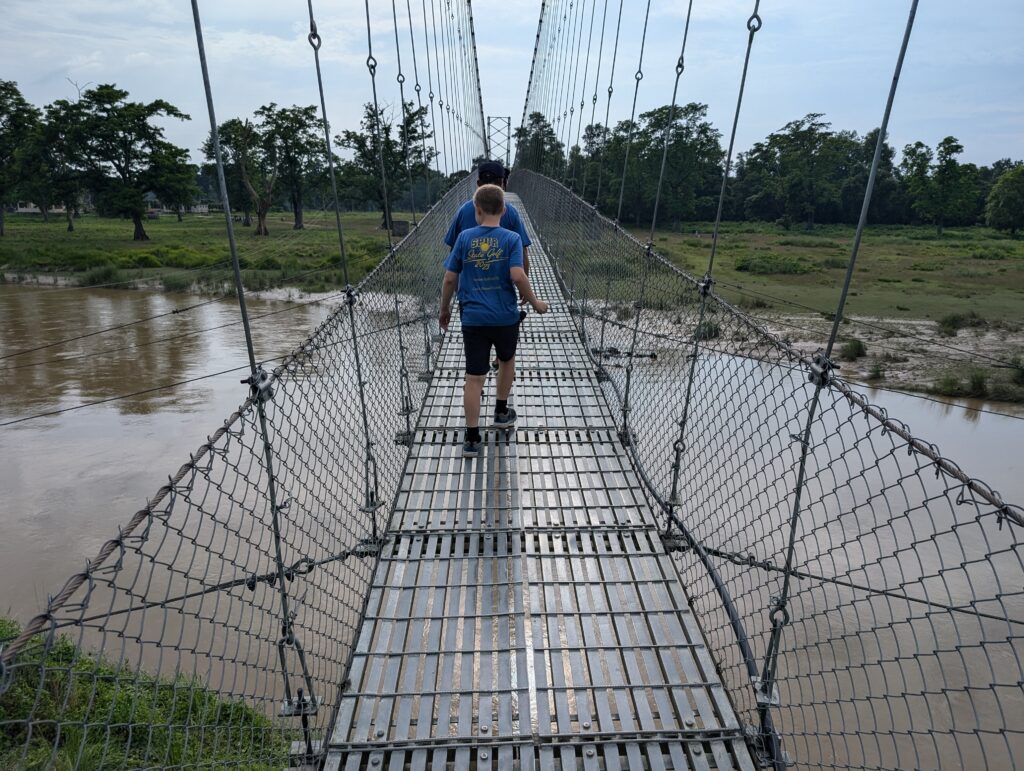
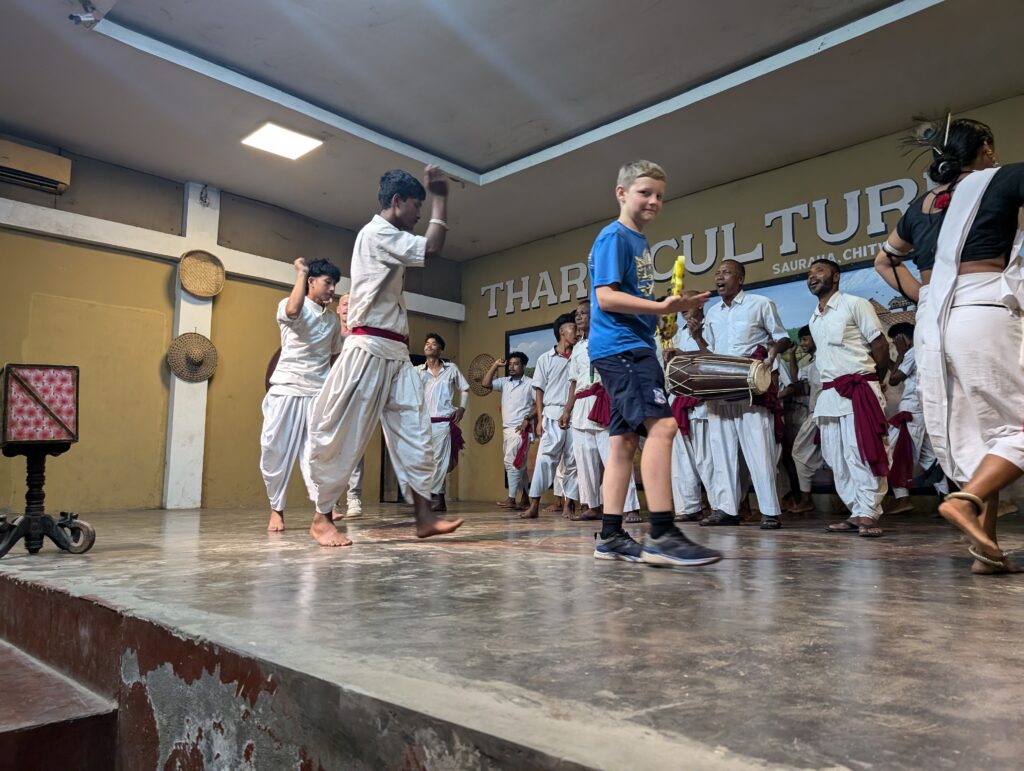


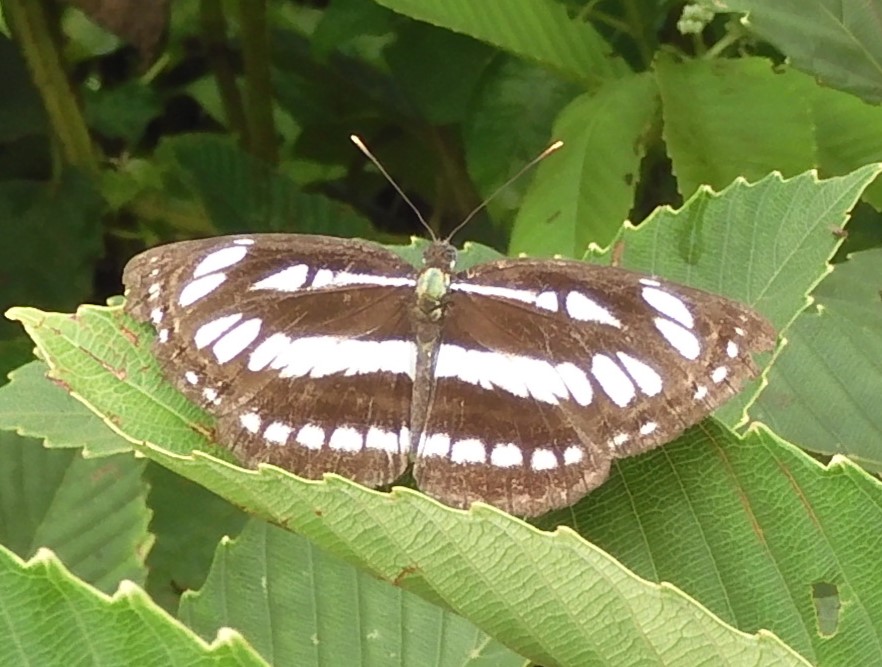
We headed out to an elephant breeding facility first. There were baby elephants with mothers there. There was not much to it, other than that you could walk around and look at them. Other tourists we met the next day said they were allowed to pet them. We weren’t offered this option, and didn’t think to ask. Elephants are not native to the jungles of this part of Nepal, but they do well there. The male elephants apparently roam the jungle and show up to breed the females on occasion. At least that is the impression I came away with. We had more of a taxi driver than a guide on this excursion. Communication was limited by the language barrier, so I don’t know if he didn’t know much about the facility or just wasn’t able to communicate it. In any case, it was kind of cool to see the elephants.
We came back to our room, and then headed to town for some Nepali cuisine. Nepal is famous for several dishes. I made the attempt to try as many as I could while we were there. As in India, a lot of the food is a bit spicy. I liked it, though restaurateurs often thought I was not enjoying my food. I just sweat a lot under any circumstances. Eating hot food in a muggy climate is going to make me sweat. It doesn’t mean I dislike the food!
Thali comes on a platter with a bunch of different components you add to your own taste. There is a big piece of fried chip, like a tortilla or flat taco shell that you can scoop it up in, and there is often a rice base you can mix it into. To me Dal Baht looked and tasted about the same. If there was a difference, I don’t know what it was. A mo mo plate is served as a group of about ten dumplings with some kind of spicy filling. Most of these dumplings are not fried, though you can order them that way. You can get them filled with meat, vegetables, mushrooms, or quite a variety of things, but they are always kind of spicy – enough so that Caleb didn’t like them. Sel roti is more of a street food. It looks like a donut, but isn’t sweet. It has more of a donut texture than a bagel. I was not all that impressed with these, but they weren’t terrible. A lot of your combo dishes like thali or dal baht come with dhido. This is a fermented or picked mixture of leafy vegetables. Sometimes these are spinach, sometimes something else. But it is a surprisingly good addition to most mixtures. Overall, I enjoyed the Nepali food, even if it wasn’t my favorite. If I had one complaint about the Nepali (and Indian) food, it was that every time I ordered anything with lamb in it, the meat quality was terrible. I’d have to spit most of it back out. It was stewed lamb, but almost all I ever got was gristle, bones, fat, and sinew. The whole time I was in India and Nepal, I think I only got about three bites of actual lamb meat. I finally stopped ordering it.
That first evening, we went to a Tharu cultural program that included the performance of several traditional dances by members of the aforementioned indigenous group. They had a choreographed stick dance, where the men replicated fighting while dancing and banging together staves. A different dance involved a small girl in a peacock outfit who gave Caleb a rose. I have no idea how authentic all of these dances were, but it was an entertaining performance that I assume had some basis in Tharu culture.
We got up early Friday morning to do a walking tour of the jungle. Caleb was a bit nervous about this, as people sometimes see tigers and other dangerous animals on these “safaris.” Since it was monsoon season, the park itself was closed to the jeep safaris. We would take a jeep trip that afternoon to a peripheral area where vehicular traffic was still allowed, but if you wanted to enter the park proper while we were there, you had to walk it. We never did see any big cats, but we saw lots of peacocks, summer deer and spotted deer, an eagle, quite a few rhinoceroses including some mother baby pairs, several rhesus macaque monkeys, two different kinds of crocodiles, a colorful difficult to spot oriole, several almost fluorescent caterpillars, beautiful black and yellow butterflies, and some long skinny red and black stink bugs Caleb was really impressed with. We never saw any sloth bears, but they apparently have those. We saw a bunch of their dung. They climb up at night and sleep on the wildlife viewing towers.
We had a group jeep safari in the afternoon, whereas our walking tour had been private. We got to meet several other tourists, which was fun. I got some good tips on visiting Malaysia from a lady who lived in Dubai. Caleb kept a German couple entertained when there were not so many animals. I don’t think we saw any animals we hadn’t seen in the morning, but it was enjoyable and the scenery was brilliant in both cases. My highlight form the jeep tour was a photograph of a soccer game we witnessed as we came back into town. Several local children were playing a pickup game on one side of the field, and there in the background was a random rhino. That was my favorite photo from Chitwan.
(Continued)



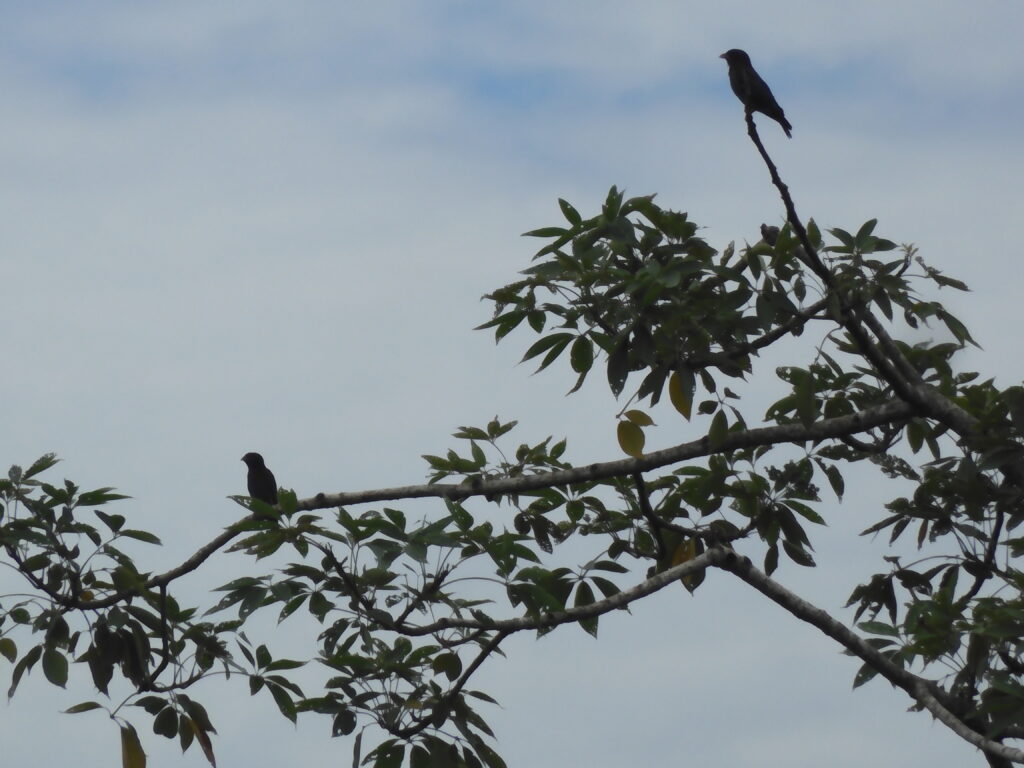
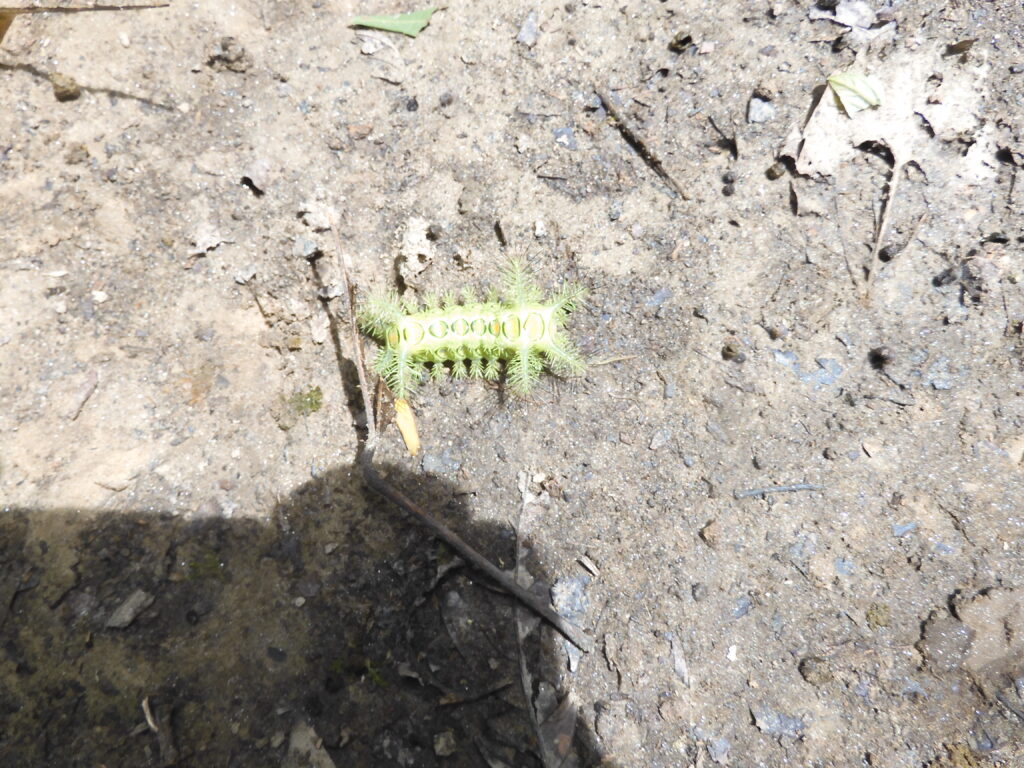
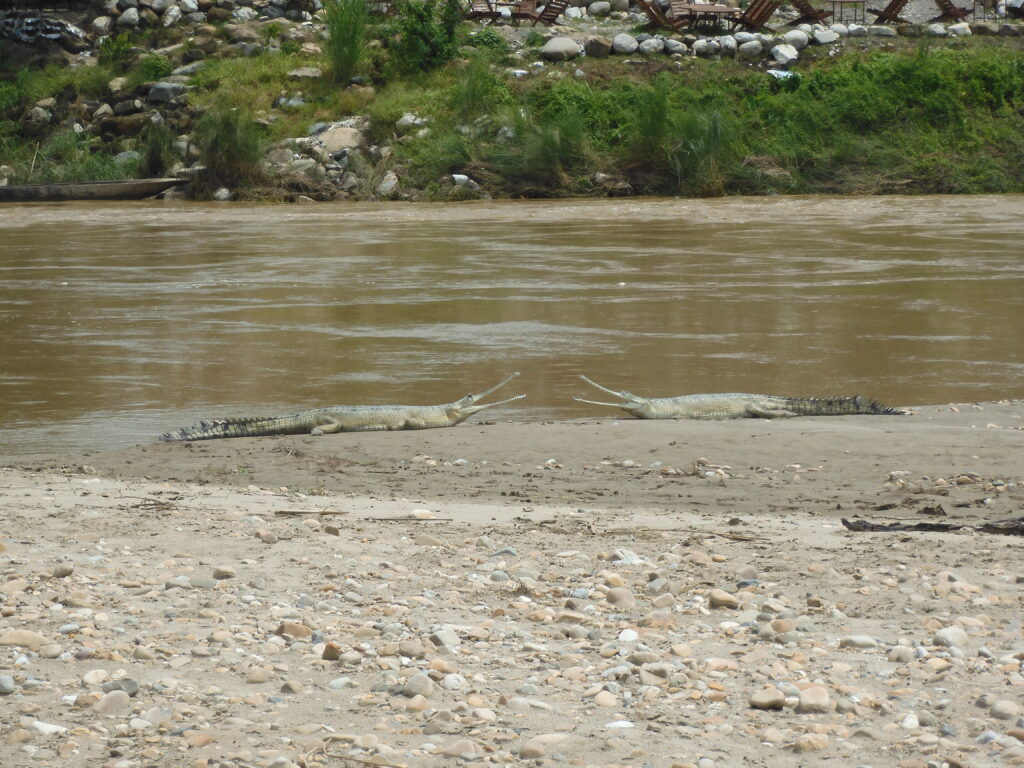
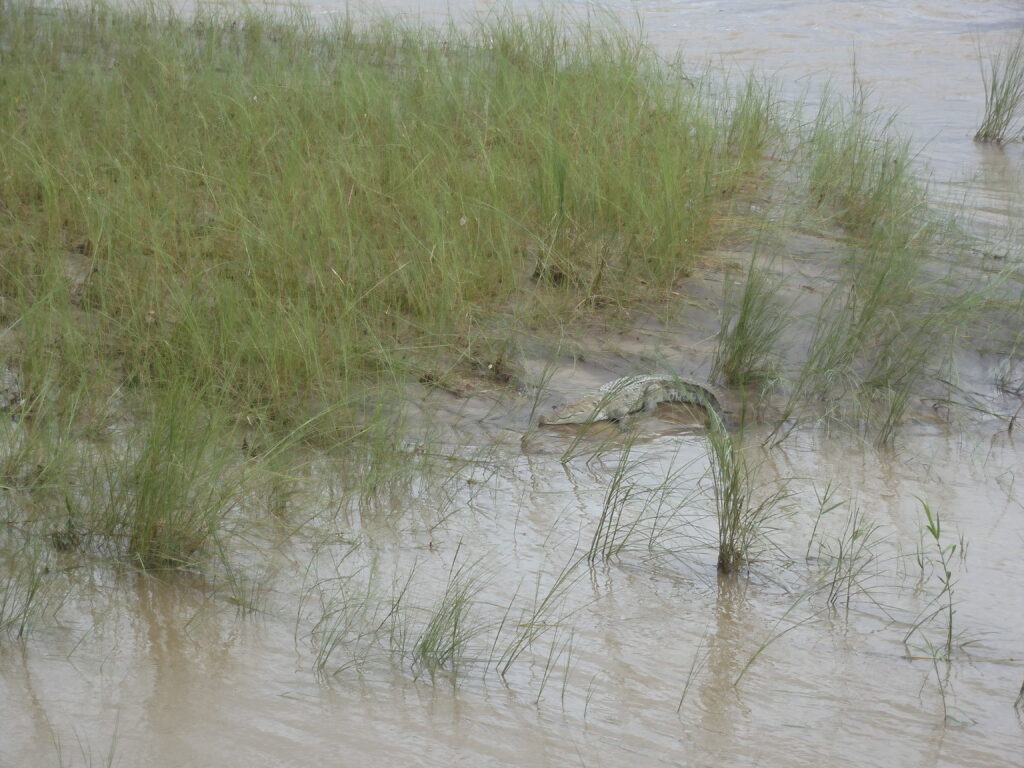
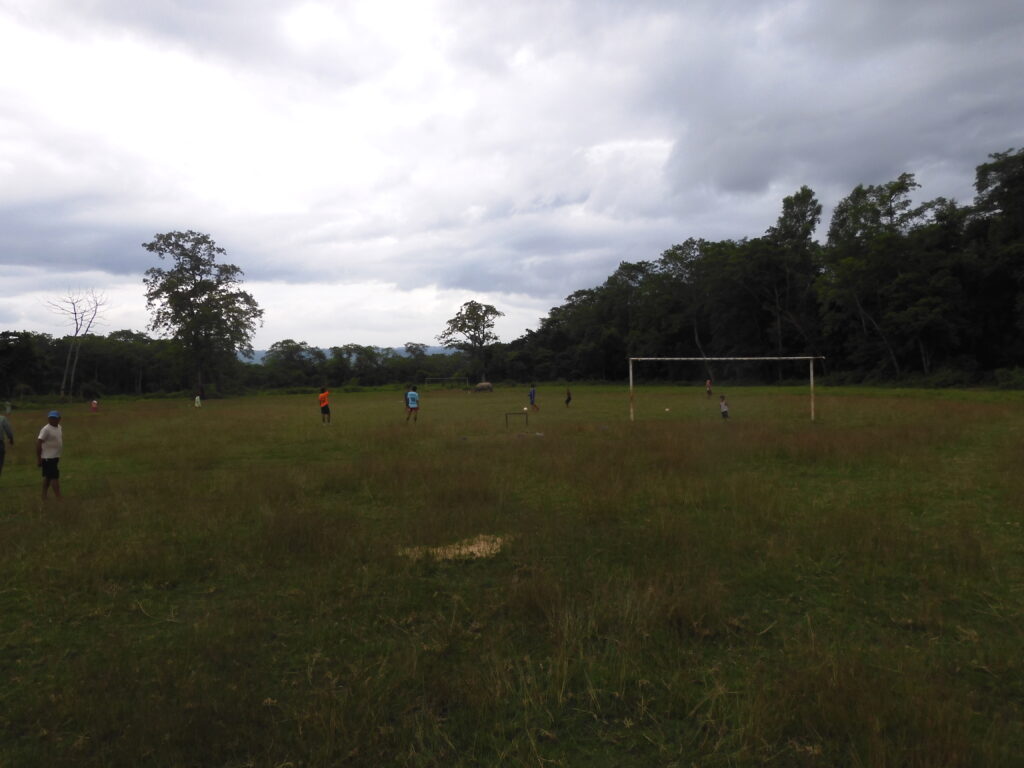
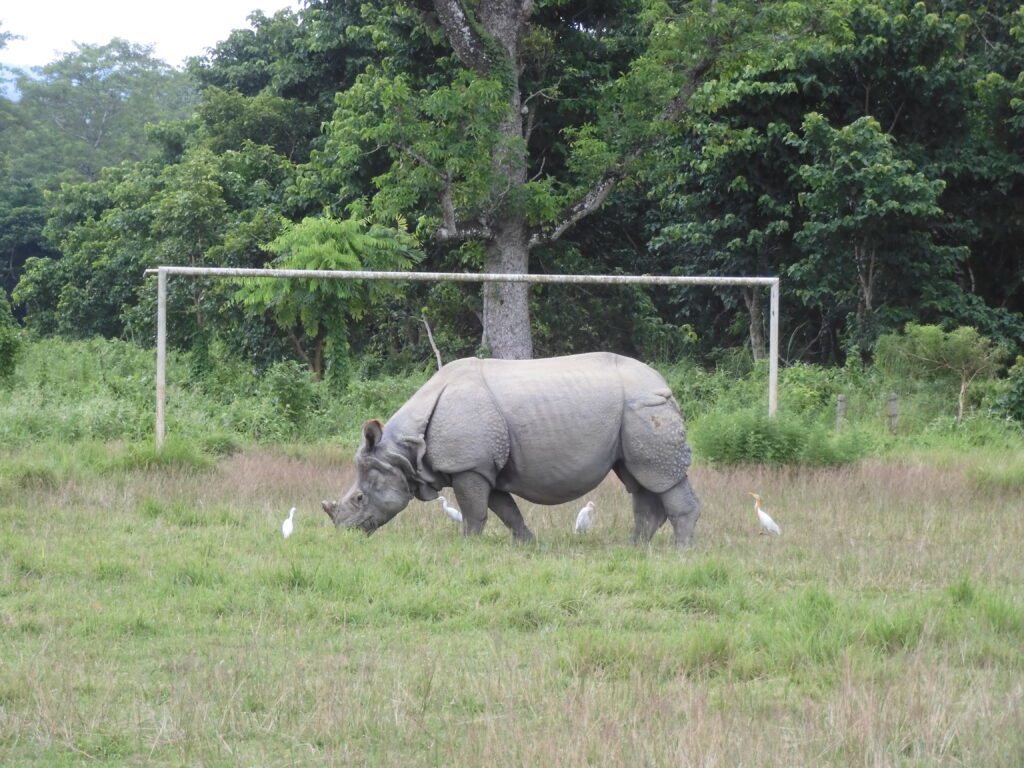
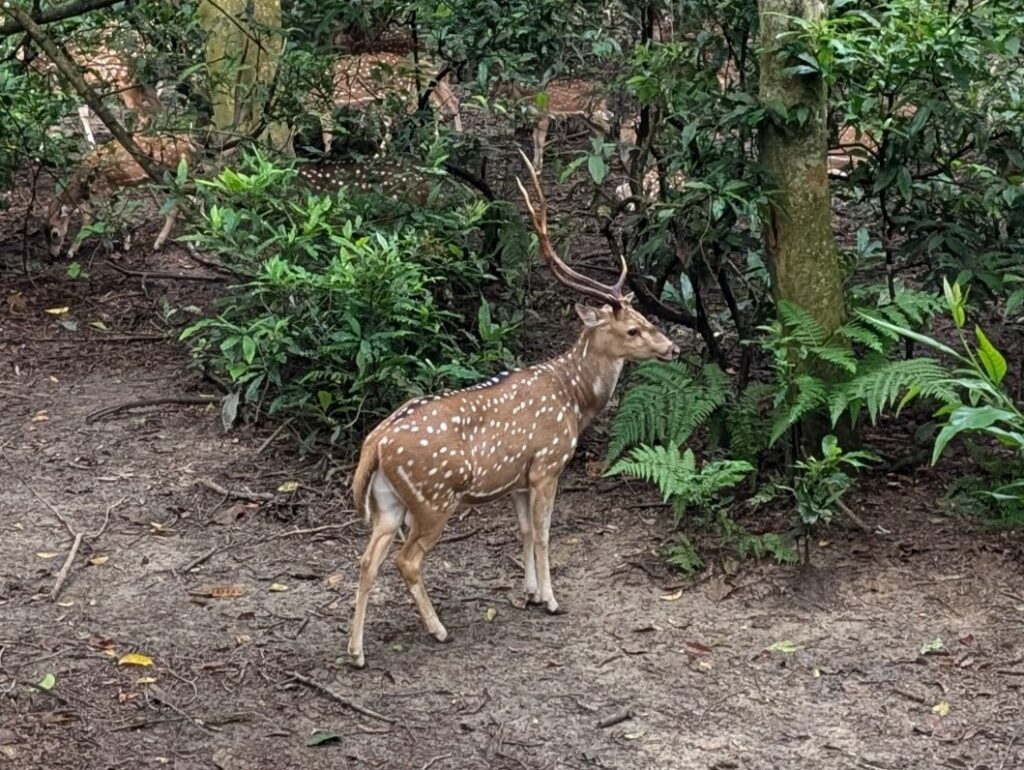
When we were selecting the activities our hosts coordinated for us at Chitwan, I had asked for input from Caleb on what he wanted to do. He had heard me elect to take the group jeep safari over the private one. This alone reduced our cost by $125! He wanted to see some elephants, but when I asked him which elephant activity he was most interested in, he surprised me by choosing the breeding facility. There was also an “elephant safari,” where you actually got to ride the elephant. He had selected the less expensive option out of concern for what it might cost me.
We had completed the items on our agenda and had a sort of “flex” day on our final day in Chitwan. I was fine with taking some of the day to rest, write, and catch up on some work. We had not seen any big cats, though, and we were here in the jungle for just this last day. I am not sure if Caleb really understood that the elephant ride was also a safari. I asked him if he really would rather have seen the breeding facility than ride the elephants. Once he said he had just fibbed on that to try to keep my costs down, I proposed doing the safari on our last morning. I didn’t really expect to see any animals we hadn’t seen already. It was low season at Chitwan for a reason. But we could kill two birds with one stone here. We took one last opportunity to see some wildlife and got to ride an elephant!
Again, we did not see any wildlife we hadn’t already observed on the initial walking tour. But we rode the elephant. It was interesting to see how the driver interacted with her. He nudged her forward by tapping the backs of her ears with his bare feet. He talked to her gently in Nepali, and sometimes offered more crisp commands of some kind. He did have a big stick, but I generally only saw him tap on the top of her ear with it, rather than using it to strike the animal. We rode around looking at the same animals for a couple of hours. We passed through bogs, forded a river twice, and swished branches away several times. Once, my water bottle fell to the ground. The elephant picked it back up with her trunk and handed it to the driver who returned it to me! Once, the driver had to get off to urinate or something. He remounted by climbing up and over the head of the elephant rather than scaling a ladder and dropping into the basket as we had done.
We enjoyed the rest of the day lounging at our room. We rode the decrepit bike here and there. Caleb learned from the host how to play Ludo. I wrote and caught up on work. I hand washed all my clothes and hung them on a line on the building roof. It was a nice relaxing afternoon. I even ran that day and the next morning. The runs did not feel refreshing, though. It was still very hot in Chitwan. The mornings were humid and still very warm. I had quit running due to the heat while we were in the Emirates, Oman, and India, but Sauraha wasn’t much better. I still felt better to have exercised some.
